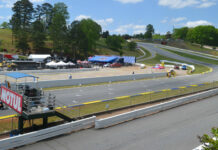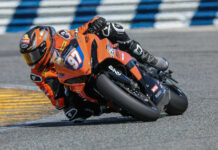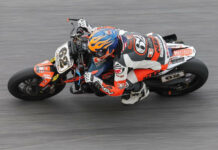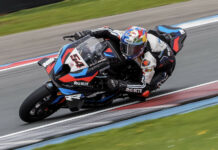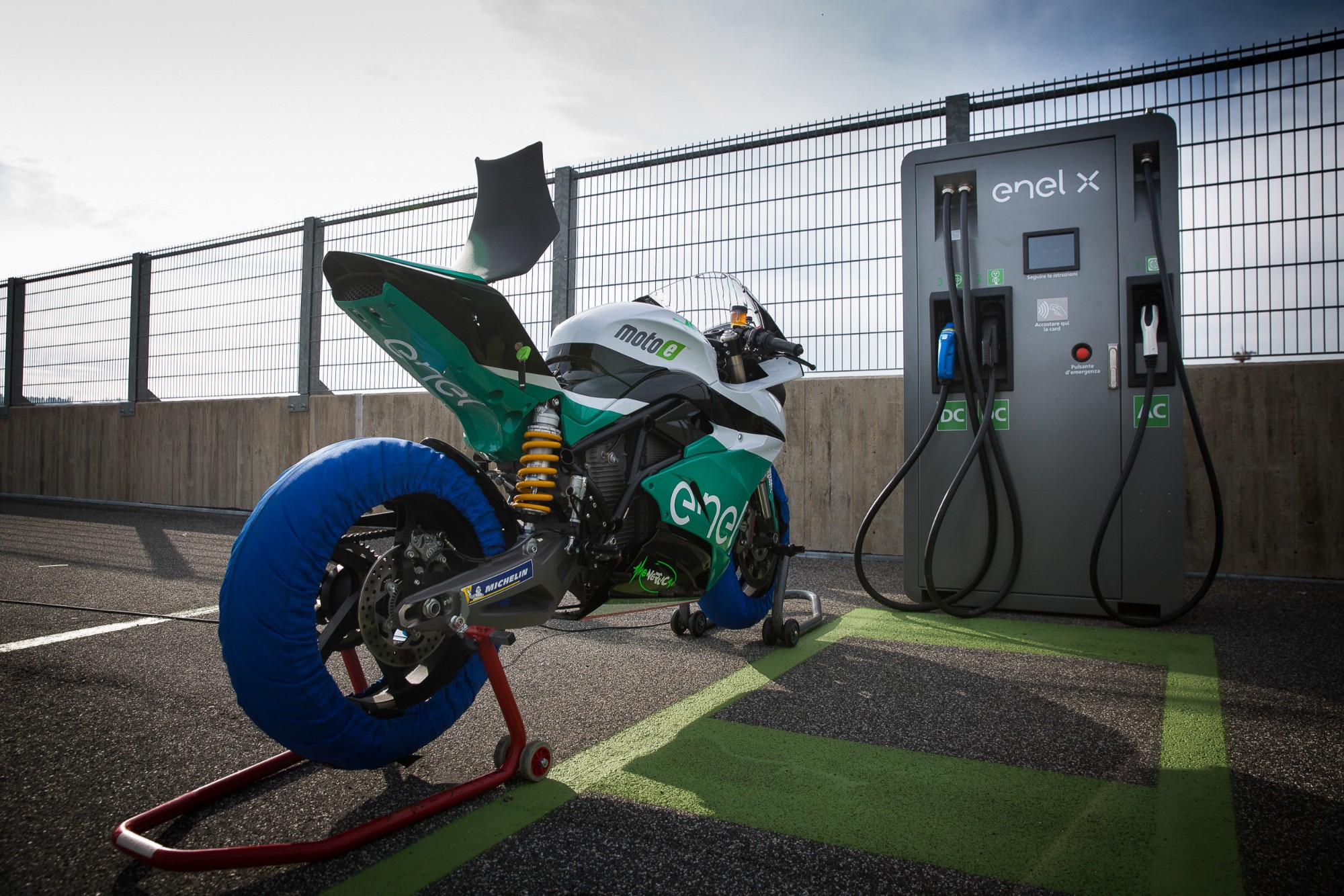Editorial Note: Answers are attributed to Energica Chief Technical Officer Giampiero Testoni.
Q&A ENERGICA
1. What is the risk of fire for an Energica vehicle?
The tests we perform on our vehicles are inherited from the tests
carried out on road vehicles throughout the years, which respect the safety
standards for appropriate use, in every riding situation. Not a single one of
our clients has experienced an issue of this sort and in ten years of activity
in the EV industry we have never had a single safety issue, not even in Jerez.
We are therefore confident and not worried regarding the safety level of our
vehicles, both on the road and on the track.
2. What is the actual risk of fire of an electric vehicle in comparison
with endothermic-powered vehicles?
As for every vehicle, whether electric or endothermic, there is always a
risk. An important thing to know is that fuel contains a much higher amount of
energy compared to batteries.
3. Is thermal runaway an actual risk for an Energica motorcycle?
Thermal runaway is a risk that is present in every battery, not only in
vehicles but also smartphones, for example. We have taken all safety measures
to make sure the battery does not reach this condition – and we haven’t
experienced a single case of thermal runaway in ten years.
4. What are the safety measures Energica adopted to avoid such a situation
developing on the motorcycle?
There are several safety devices within the battery pack and the vehicle
itself to prevent dangerous situations. The battery is monitored for both
temperature and tension, so that during the charging process the electronic
management system of the vehicle will not allow the vehicle to reach high
temperatures, which could cause damage to the battery and/or fire (or thermal
runaway). During the actual riding, if the battery reaches a specific
temperature the amount of power available to the vehicle is reduced and
therefore the power absorption from the battery, which ensures the risk of
thermal runaway is kept at bay.
5. Have the bikes ever shown any sign of overheating?
The racing bike
has always stayed within the range of use we had tested for a whole year, with thousands
of kms performed by our test riders on various tracks under different weather
conditions covering as well the high air temperature of the summer. After all,
the racing bike has inherited the safety standards set for our road vehicles,
which are homologated and certified in EU and USA – and have hundreds of
thousands of kms of testing done prior and throughout. Safety has always been
the number one priority for us. In addition to all this, further tests to the
racing battery have been carried out with IRTA to evaluate the strength and
resilience of the battery pack: those tests were so extreme that they’re not
even requested for road vehicles. All tests were passed in an excellent way and
the results went beyond anyone’s expectations, including ours.
6. How does the charging process work?
The charging process – both on track and on the road – follows the CCS
standard, which a certified and homologated international standard of
automotive derivation. In the two-wheeled world, we are the only manufacturer
that has adopted this standard on their vehicles, as it is a very complicated
and expensive protocol – but also very safe. This protocol is adopted by all
the car manufacturers, as well as by the main global institutions. The CCS
standard manages the communication between station and vehicle, and starts the
charging process. In case of malfunction, the process is immediately stopped.
7. What happens when the charging process is completed?
Once charging is completed, the battery contactors open up and so there
is no more tension. Once again, during all the charging process the battery
temperature cells are being monitored and will not exceed a given threshold.
8. What type of tests have been performed to guarantee the integrity of the
battery pack of the racing motorcycle in case of a crash? What were the
results?
We performed several tests for the mechanical strength of the battery
case and its impact resistance when hit by a blunt heavy object. The results
were beyond our expectations and beyond any test performed to fuel tanks of
racing vehicles.
9. What are the duties of the Energica team within the E-paddock?
We assist the team technicians for any need, for example in case of a
crash. We provide answers and clarification to questions and alleviate doubts
on the electronic side of the bike. We are always available for any matter,
always and only with regards to the motorcycles.
10. What is Energica doing now in order to produce the amount of motorcycles
needed for the competition to take place?
The morning after the accident we were already hard at work to make sure
the championship can take place. Obviously, this is a very significant effort
for Energica, but we’re aware of our capabilities and we’re working closely
with our suppliers and with sponsors Dorna and Enel X to ensure that the series
can make its official debut as soon as possible. We strongly believe in this
project and we’re both proud and happy to be an integral part of it. We
committed to MotoE from day one and recent happenings have not undermined in
any way our faith in the strength and importance of the FIM Enel MotoE World
Cup.
11. What are the safety measures in place on the Energica Ego Corsa and
planned by MotoE to minimise the likeliness of an accident?
We have a high standard
BMS and since 10 years we are working on EVs. We had no issue so far both on
racing and on street vehicles. There’s also a tyre monitoring system in case of
puncture (first time in racing), the pit-lane buzzer for incoming motorbikes
and the blinking lights at the dashboard that tells you if the bike is on.
12. What are the safety measures to minimise the consequences of an
accident?
There is a system in place that automatically powers the bike off when
tilting, and there’s also a side light that notifies of a possible short cut
telling the marshals and the riders if the bike can be picked up or not). Dorna
has also reproduced a battery fire to better assess how to extinguish a fire
coming from a single bike. IRTA/Dorna are also designing a specific intervention
vehicle that will be ready for the first race.
As an important part of the Championship, Energica is of course ready to
sit down with the other parties involved, to learn about the Jerez incident to
come back with a safer and stronger global package


